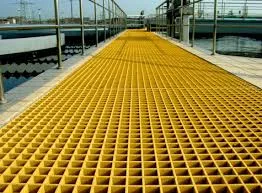
-
 Afrikaans
Afrikaans -
 Albanian
Albanian -
 Amharic
Amharic -
 Arabic
Arabic -
 Armenian
Armenian -
 Azerbaijani
Azerbaijani -
 Basque
Basque -
 Belarusian
Belarusian -
 Bengali
Bengali -
 Bosnian
Bosnian -
 Bulgarian
Bulgarian -
 Catalan
Catalan -
 Cebuano
Cebuano -
 China
China -
 China (Taiwan)
China (Taiwan) -
 Corsican
Corsican -
 Croatian
Croatian -
 Czech
Czech -
 Danish
Danish -
 Dutch
Dutch -
 English
English -
 Esperanto
Esperanto -
 Estonian
Estonian -
 Finnish
Finnish -
 French
French -
 Frisian
Frisian -
 Galician
Galician -
 Georgian
Georgian -
 German
German -
 Greek
Greek -
 Gujarati
Gujarati -
 Haitian Creole
Haitian Creole -
 hausa
hausa -
 hawaiian
hawaiian -
 Hebrew
Hebrew -
 Hindi
Hindi -
 Miao
Miao -
 Hungarian
Hungarian -
 Icelandic
Icelandic -
 igbo
igbo -
 Indonesian
Indonesian -
 irish
irish -
 Italian
Italian -
 Japanese
Japanese -
 Javanese
Javanese -
 Kannada
Kannada -
 kazakh
kazakh -
 Khmer
Khmer -
 Rwandese
Rwandese -
 Korean
Korean -
 Kurdish
Kurdish -
 Kyrgyz
Kyrgyz -
 Lao
Lao -
 Latin
Latin -
 Latvian
Latvian -
 Lithuanian
Lithuanian -
 Luxembourgish
Luxembourgish -
 Macedonian
Macedonian -
 Malgashi
Malgashi -
 Malay
Malay -
 Malayalam
Malayalam -
 Maltese
Maltese -
 Maori
Maori -
 Marathi
Marathi -
 Mongolian
Mongolian -
 Myanmar
Myanmar -
 Nepali
Nepali -
 Norwegian
Norwegian -
 Norwegian
Norwegian -
 Occitan
Occitan -
 Pashto
Pashto -
 Persian
Persian -
 Polish
Polish -
 Portuguese
Portuguese -
 Punjabi
Punjabi -
 Romanian
Romanian -
 Russian
Russian -
 Samoan
Samoan -
 Scottish Gaelic
Scottish Gaelic -
 Serbian
Serbian -
 Sesotho
Sesotho -
 Shona
Shona -
 Sindhi
Sindhi -
 Sinhala
Sinhala -
 Slovak
Slovak -
 Slovenian
Slovenian -
 Somali
Somali -
 Spanish
Spanish -
 Sundanese
Sundanese -
 Swahili
Swahili -
 Swedish
Swedish -
 Tagalog
Tagalog -
 Tajik
Tajik -
 Tamil
Tamil -
 Tatar
Tatar -
 Telugu
Telugu -
 Thai
Thai -
 Turkish
Turkish -
 Turkmen
Turkmen -
 Ukrainian
Ukrainian -
 Urdu
Urdu -
 Uighur
Uighur -
 Uzbek
Uzbek -
 Vietnamese
Vietnamese -
 Welsh
Welsh -
 Bantu
Bantu -
 Yiddish
Yiddish -
 Yoruba
Yoruba -
 Zulu
Zulu
Durable Fiberglass Flanges for Reliable Sealing Solutions in Various Applications
Understanding Fiberglass Flanges A Comprehensive Overview
Fiberglass flanges are essential components in various industries, particularly in piping systems where corrosion resistance, lightweight, and durability are crucial. These flanges are manufactured from a composite material that combines glass fibers with a resin matrix, creating a strong, lightweight product that can withstand harsh environmental conditions. This article explores the key features, benefits, applications, and installation techniques related to fiberglass flanges.
What Are Fiberglass Flanges?
Fiberglass flanges are flat surfaces with holes that are used to connect pipes or fittings in a pipeline. They serve as a means to join two sections of piping while allowing easy access for maintenance and inspection. The composition of fiberglass, primarily consisting of glass fibers and resin, presents a unique set of properties that differentiate it from traditional materials like metal and plastic.
Key Features
1. Corrosion Resistance One of the most significant advantages of fiberglass flanges is their resistance to corrosion. Unlike metal flanges, which can rust or corrode when exposed to moisture or aggressive chemicals, fiberglass maintains its integrity even in challenging environments, making it ideal for chemical processing and wastewater management.
2. Lightweight Fiberglass is considerably lighter than metal, which simplifies transportation, handling, and installation. This can result in reduced labor costs and the ability to work with larger sizes without requiring heavy lifting equipment.
3. Thermal Resistance Fiberglass flanges can withstand a wide range of temperatures, making them suitable for applications involving high temperatures or cryogenic conditions. This thermal stability is vital in industries such as oil and gas, where fluctuating temperatures are common.
4. Electrical Insulation Fiberglass is an excellent electrical insulator, providing safety in applications where electrical conductivity must be minimized. This feature is particularly beneficial in industries where electrical hazards are a concern.
5. Customization Fiberglass flanges can be easily molded into various shapes and sizes, allowing manufacturers to create custom solutions tailored to specific project requirements.
Applications
fiberglass flange

The applications of fiberglass flanges are vast and varied
. They are commonly used in- Chemical Processing Plants Due to their corrosion resistance, fiberglass flanges are ideal for handling aggressive chemicals and acids. - Water Treatment Facilities The durability and non-corrosive nature of fiberglass make it suitable for use in wastewater systems. - Oil and Gas Industry Fiberglass flanges are utilized in pipelines where interactions with harsh substances occur, reducing maintenance costs and extending the lifespan of the system. - Marine Applications Their resistance to saltwater corrosion makes fiberglass flanges popular in the maritime sector.
Installation Techniques
Installing fiberglass flanges requires attention to detail to ensure a proper seal and connection with minimal risk of leakage. Here are some key steps to follow
1. Preparation Before installation, ensure that the flange surfaces are clean and free of debris. Checking for defects in the flange is also crucial to avoid potential failures.
2. Alignment Properly align the flanges to avoid unnecessary stress on the joints. Misalignment can lead to premature failure and leaks.
3. Gaskets When connecting flanges, use an appropriate gasket material compatible with the fluids being handled. This will help create a tight seal and prevent leaks.
4. Bolting Use the appropriate number and size of bolts to secure the flanges. When tightening, follow a star pattern to evenly distribute the pressure and avoid warping the flanges.
5. Testing After installation, pressure test the system to ensure no leaks are present.
Conclusion
Fiberglass flanges are a versatile and reliable choice for various industrial applications. Their unique properties—such as corrosion resistance, lightweight, and thermal stability—make them indispensable in environments where durability and safety are paramount. By understanding their features, benefits, and installation techniques, industries can maximize the effectiveness of their piping systems while reducing maintenance costs and downtime. As technology continues to advance, the use and innovation of fiberglass flanges will undoubtedly expand, further solidifying their place in modern engineering solutions.









